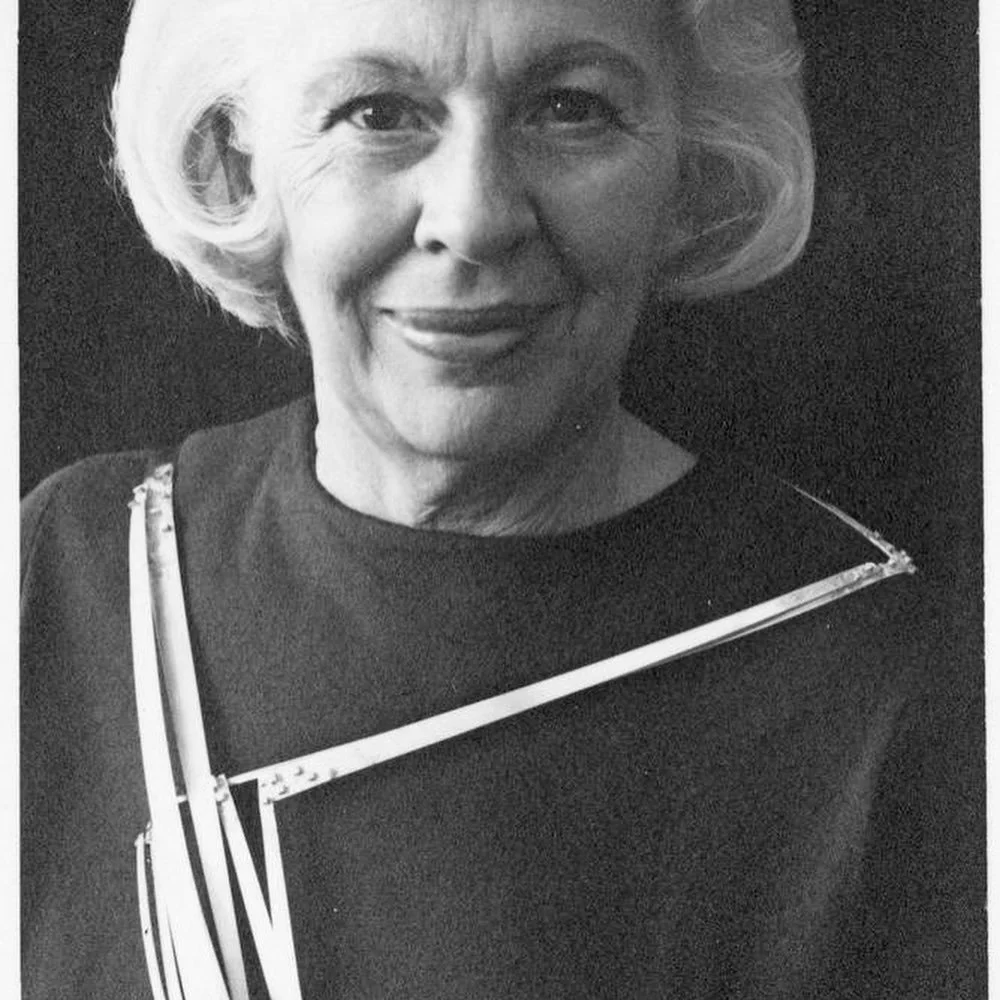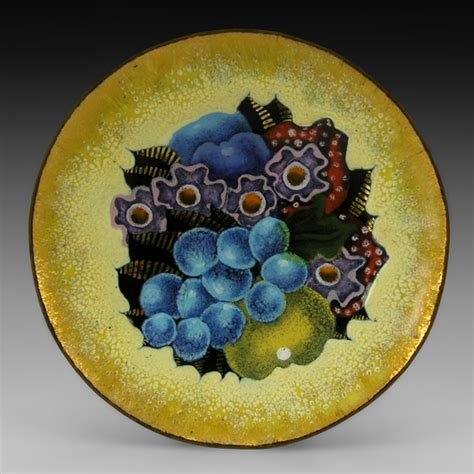
Alma Eikerman: The Quiet Force Who Shaped Metalsmithing Education
For anyone who has studied the history of Craft with care, Alma Eikerman is more than a name—she’s a blueprint. A revolutionary force tucked into the folds of academia, she quietly, steadfastly reshaped what it meant to learn, teach, and master metalsmithing in America.
Eikerman didn’t just make jewelry—she made standards. The structure of today’s graduate programs in metals and jewelry? Much of it follows the contours of her vision. Her influence is so deeply embedded in our institutions that it can be difficult to trace back to the woman herself. Her physical works are rarely seen; her legacy lives instead in syllabi, critiques, studio habits, and the very idea that metalsmithing belongs in the university.
Born on May 16, 1908, in Pratt, Kansas, Alma was raised on a working farm by a family who honored creativity with their hands. Her earliest studies weren’t in art, but in history, literature, and language—a foundation that would later lend poetry and structure to her teaching. She began her professional life as a schoolteacher, only later returning to Kansas State to pursue the arts. After transferring to Columbia University, she earned her Master’s in 1942 with a specialization in metalsmithing, painting, and design—a rare and radical combination at the time.
When World War II erupted, Alma joined the Red Cross and traveled to Italy, where she served her country and continued her study of design. Returning stateside in 1947, she joined the faculty at Indiana University, where she didn’t just teach—she transformed. Her energy reinvigorated the metals program, and on a sabbatical in 1950, she expanded her knowledge even further by studying with Danish master Karl Gustav Hansen, as well as Henrick Boesen and Erik Fleming.
Upon returning to Indiana University, Alma began integrating hollowware into her studio practice, pushing the boundaries of what jewelry and metal art could encompass. She didn’t stay in one lane; she widened the whole road. Her work was experimental, elegant, and steeped in function—a quiet rebellion against ornament for ornament’s sake.
By 1970, she had co-founded SNAG, the Society of North American Goldsmiths, cementing her place in Craft history. Her name became a household word in the American metals community, and her presence an aspirational figure for countless women entering the field. She was more than a metalsmith—she was a model of persistence, intellect, and excellence in a male-dominated world. A Distinguished Professor Emeritus at Indiana University, she retired at the age of 70, leaving behind not just objects, but a movement.
Alma Eikerman passed away on January 3, 1995, in her Bloomington home, surrounded by the quiet echoes of a life that redefined what women could do with fire, metal, and vision.
In her, we see the strength of feminism not in loud declarations, but in methodical, brilliant, lasting change. We honor her not just for what she made, but for what she made possible.

Ohio’s Quiet Fire: The Legacy of Kenneth F. Bates and the American Enameling Renaissance
Ohio has always carried a quiet, persistent flame for the arts—flickering through workshops, studios, and classrooms, waiting to ignite new hands and hearts. In the early 20th century, Cleveland became an unlikely crucible for American enameling, that exquisite fusion of glass and metal that seems almost alchemical in its glow.
At the center of this transformation stood Kenneth F. Bates, a visionary artist and educator who taught at the Cleveland Institute of Art for nearly fifty years. Bates quite literally wrote the book on enameling, shaping not only the curriculum but the very language of modern American enamel art. His careful guidance, passion, and ceaseless experimentation turned copper and silver into canvases of luminous color—vivid stories coaxed from fire.
Bates’ influence didn’t stop with his own remarkable work. His students—and their students—carried these techniques and philosophies across the country. They breathed new life into ancient practices, pushing boundaries, forging modernist jewelry, and proving again that craft is a lineage of both skill and heart. From delicate cloisonné to bold abstract panels, the legacy of Ohio’s enameling pioneers lives on in countless studios today.
Now, more than a century later, we find ourselves in the midst of a quiet renaissance. Enameling is blooming all over again. Artists across Ohio and the broader American craft community are drawing luminous narratives from their kilns. You can spot these vibrant creations at art fairs, intimate gallery shows, and shared proudly across social media—sparking wonder in the most ordinary of moments.
As makers and appreciators, we inherit more than just technique. We inherit a way of seeing: of honoring process, of caring deeply for materials, of leaving thoughtful traces behind for others to build on. What we create, teach, and pass along becomes part of a ripple that can extend long after we are gone.
So here’s to Kenneth F. Bates, to Ohio’s enduring fire, and to all of us still tending it—one brushstroke of enamel, one hand-raised torch at a time. May we continue to experiment, to teach, to create, so that the next generation has something luminous and lasting to stand upon.
